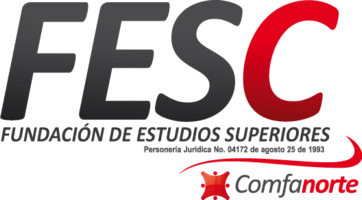Virtual Education In Robotics: Implementation Of Steam, Scratch, And Arduino For Computational Thinking In High School
DOI:
https://doi.org/10.61799/2216-0388.1718Keywords:
Virtual course - ICT tools - STEAM model - Computational thinking - Educational roboticsAbstract
Educational systems and institutions are incorporating new paradigms to innovate. This study aims to demonstrate how integrating computational thinking skills, the STEAM model, and ICT tools into the electronics subject, through a virtual robotics course, improves learning and develops computational thinking skills. The methodology included the use of Instructional Design (ID) for course construction and a mixed-methods approach for validation, utilizing interviews and Moodle platform records. The sample consisted of 45 ninth-grade students from Laureano Gómez Castro Educational Institution in Aguachica, Cesar. The findings indicate that the intervention with Scratch and Arduino significantly improved the learning of specific content and computational thinking skills. It is concluded that innovative educational practices and the choice of appropriate strategies can maintain student motivation and be applicable in various areas.
Downloads
References
[1] J. Briceño, D. Rojas, Y. Chirinos, y Y. Alaña, Y, “E-competencias, apropiación social y actitudes hacia las TIC – TAC – TEP en las necesidades formativas del docente”, En: Tendencias en la Investigación Universitaria. Una visión desde Latinoamérica, Y. Chirinos, A. Ramírez, R. Godínez, N. Barbera, y D. Rojas, Vol. II, 2018, pp. 166-192.
DOI: http://doi.org/10.47212/tendencias2018vol.iii.9 DOI: https://doi.org/10.47212/tendencias2018vol.iii.9
[2] Y. Alzate, “VEX.code y Bitbloq para el fortalecimiento de la Robótica educativa y el pensamiento computacional”, tesis maestría, Universidad Santander, Colombia, 2022. [En línea]. Disponible en: https://repositorio.udes.edu.co/server/api/core/bitstreams/c96016b4-4e3d-4cae-bbe6-e0769edbca7f/content [Accedido: 03-abr-2024].
[3] M.C. Cordero-Díaz, M.C. Díaz-Soto, A. Díaz-Soto, y C. Marulanda-Ascanio, “La investigación como estrategia pedagógica en la construcción de una cultura en ciencia, tecnología e innovación en la escuela”, Mundo Fesc, vol. 10, no. s1, pp. 181-189, 2019. https://www.fesc.edu.co/Revistas/OJS/index.php/mundofesc/article/view/417 DOI: https://doi.org/10.61799/2216-0388.417
[4] J. Anchico y J. Murillo, “Desarrollo del pensamiento computacional en programación JAVASCRIPT con metodología STEAM y actividades en SCRATCH para estudiantes del grado 11” tesis maestría, Universidad Santander, Colombia, 2021. [En línea]. Disponible en: https://repositorio.udes.edu.co/server/api/core/bitstreams/0b49da94-c53b-4acc-aa14-d7dcf8a2e902/content [Accedido: 03-abr-2024].
[5] A. Campo-Quintero, “La formación pedagogica tic del docente, en tiempos de pandemia y su incidencia en los procesos de enseñanza y aprendizajede la matematica”, Eco Matemático, 11 (2), 30-45 DOI: https://doi.org/10.22463/17948231.3063
[6] Y. Caballero, “Desarrollo del pensamiento computacional en Educación Infantil mediante escenarios de aprendizaje con retos de programación y robótica educativa”, tesis doctoral, Universsidad de Salamanca, Colombia, 2020. [En línea]. Disponible en: https://gredos.usal.es/handle/10366/142799 [Accedido: 03-abr-2024].
[7] J. Vargas, S. Vargas, y K. Pinto, “Tendencias de web 2.0. como plata-forma tecnológica para la innovación en el pensamiento pedagógico docente”, Revista Temario Científico, 2 (2), 39-49, 2022. https://doi.org/10.47212/rtcAlinin.2.2.4 DOI: https://doi.org/10.47212/rtcAlinin.2.2.4
[8] J. Canchala, “Fortaleciendo las competencias matemáticas mediante la integración del pensamiento computacional, la metodología STEAM y SCRATCH, en estudiantes de grado séptimo de bachillerato”, tesis maestría, Universidad Santander, Colombia, 2021. [En línea]. Disponible en: https://repositorio.udes.edu.co/server/api/core/bitstreams/21599411-5fd7-490f-bdd2-93af1010f8ed/content [Accedido: 03-abr-2024].
[9] J. Carmona, J. Arias y J. Villa, “Formación inicial de profesores basada en proyectos para el diseño de lecciones STEAM”, 2019. [En línea]. Disponible en: https://bibliotecadigital.udea.edu.co/bitstream/10495/15590/1/CarmonaMesaJaime_2019_Formaci%C3%B3nProfesoresSTEAM.pdf [Accedido: 03-abr-2024].
[10] D. López, Z. Paredes, J. Reinoso, C. Analuiza, J. Chipantiza, B. Tacoamán, y J. Campos, “Desarrollo de las competencias tecnológicas en los docentes de educación secundaria y superior en tiempos de pandemia”, Dominio de Las Ciencias Vol 7, núm. 4, Agosto Especial, pp. 694-706, 2021. DOI: http://dx.doi.org/10.23857/dc.
[11] D. Castro y C. Sánchez, “Implementación de ARDUINO para desarrollar pensamiento computacional con metodología STEAM a través de la electrónica en informática en estudiantes de undécimo en Barranquilla-Atlántico”, tesis maestría, Universidad Santander, Colombia, 2020. [En línea]. Disponible en: https://repositorio.udes.edu.co/server/api/core/bitstreams/5f9864af-7a05-4d92-84fa-4dd3b31bdbfa/content [Accedido: 03-abr-2024].
[12] M. Córdoba y Y. Cristancho, “Curso Virtual de Robótica Educativa Integrando el Modelo STEAM con Scratch y Arduino Para el Desarrollo del Pensamiento Computacional en Noveno Grado”, tesis maestría, Universidad Santander, Colombia, 2021. [En línea]. Disponible en: https://repositorio.udes.edu.co/entities/publication/1d07961a-e863-429b-aa10-e4ef626fc98f [Accedido: 03-abr-2024].
[13] Y. Cristancho, M. Córdoba, Y. Ortega, J. Jorge y D. Lozano, Herramientas TIC en el campo pedagógico para el desarrollo de competencias ingenieriles desde la educación media, ”, En: Tendencias en la Investigación Universitaria. Una visión desde Latinoamérica, Y. Chirinos, A. Ramírez, R. Godínez, N. Barbera, y D. Rojas 2021. DOI: https://doi.org/10.47212/tendencias2021vol.xv.18 DOI: https://doi.org/10.47212/tendencias2021vol.xv.18
[14] O. García Rodríguez, “Construyendo robots, despertando vocaciones. Proyecto educativo de pensamiento computacional mediante robótica y programación en el Primer Ciclo de Educación Secundaria Obligatoria”, tesis de maestría, Universidad de Las Palmas de Gran Canaria, Espana, 2022, [En línea] https://accedacris.ulpgc.es/handle/10553/116375 [Accedido: 10-abr-2024].
[15] S. González Gallego, A. Santana Coll, J. Álamo Rosales y E. Quevedo Gutiérrez, “Expectativas e intereses del alumnado participante en un proyecto de centro de desarrollo de Pensamiento Computacional en el Primer Ciclo de Educación Secundaria Obligatoria”, En Educar para transformar: Innovación pedagógica, calidad y TIC en contextos formativos, D. Cobos-Sanchiz, E. López-Meneses, A.H. Martín-Padilla, L. Molina-García y A. Jaén-Martínez, 2022, pp. 3383-3393, [En línea], https://accedacris.ulpgc.es/handle/10553/121127 [Accedido: 07-abr-2024].
[16] W. Granada y H. González, “Estrategia para el desarrollo del pensamiento computacional, mediada por realidad aumentada y robot ESCORNABOT en grado cuarto”, tesis maestría, Universidad Santander, Colombia, 2020. [En línea]. Disponible en: https://repositorio.udes.edu.co/server/api/core/bitstreams/997448ed-5a87-4d8b-ad38-11475b751091/content [Accedido: 03-abr-2024].
[17] J. León y A. Moreno, “Estrategia pedagógica basada en el pensamiento computacional para el fortalecimiento de la producción escrita en estudiantes del grado octavo”, tesis maestría, Universidad Santander, Colombia, 2023. [En línea]. Disponible en: https://repositorio.udes.edu.co/server/api/core/bitstreams/6ed571e1-9287-47c3-a9c3-6bb6f89f6a05/content [Accedido: 03-abr-2024].
[18] L. Palacios y M. López, “Desarrollo del pensamiento computacional en estudiantes de décimo grado de la Institución Educativa Municipal Cristo Rey del corregimiento de San Fernando”, trabajo de grado, Universidad Mariana, Colombia, 2023. [En línea]. Disponible en: https://repositorio.umariana.edu.co/handle/20.500.14112/28000#page=1 [Accedido: 03-abr-2024].
[19] E. M. Parra Erazo y O. J. Penagos Barbosa, “Evaluación del modelo del ambiente de aprendizaje STEM MD-ROBOTICS en relación con el pensamiento computacional”, tesis de grado, Corporacion Universitaria Minuto de Dios, Colombia. https://repository.uniminuto.edu/server/api/core/bitstreams/d0d21aec-0f40-42b2-a068-33816422c626/content
[20] D. Quiroz, J. Carmona, A. Castrillón y J. Villa, “Integración del Pensamiento Computacional en la educación primaria y secundaria en Latinoamérica: una revisión sistemática de literatura”, Revista de Educación a Distancia (RED), vol 21, núm 68. 2021. [En línea]. Disponible en: https://revistas.um.es/red/article/view/485321 [Accedido: 03-abr-2024]. DOI: https://doi.org/10.6018/red.485321
[21] A. Rodríguez, “Creación de ambientes de aprendizaje de Pensamiento Computacional en Educación Infantil y Primaria”, tesis maestría, Universidad de Oviedo, España, 2020. [En línea]. https://digibuo.uniovi.es/dspace/bitstream/handle/10651/59799/TFM_AlejandraRodr%C3%ADguezVillamediana.pdf?sequence=1 [Accedido: 03-abr-2024].
[22] J. Villacís, “Integración de La Robótica Mediante El Uso de La Plataforma Arduino Para El Aprendizaje De Matemáticas En El Aula”, tesis maestría. Instituto Politécnico De Leiria, Portugal, 2019. [En línea]. Disponible en: https://www.proquest.com/openview/982261291381f3036eb31ebcca006605/1?pq-origsite=gscholar&cbl=2026366&diss=y [Accedido: 03-abr-2024].
[23] F. Silva y V. Tercero, Pensamiento computacional, programación creativa y ciencias de la computación para la educación. Reflexiones y experiencias desde América Latina, Ediciones CIESPAL. 2021
[24] J. Valencia, “El pensamiento computacional como estrategia para la enseñanza y aprendizaje de la estequiometría en grado décimo”, tesis de maestría, Universidad de Colombia, Colombia, 2023. [En línea]. Disponible en: https://repositorio.unal.edu.co/handle/unal/84930 [Accedido: 03-abr-2024].
[25] M. Acurero, M. Pérez, M. y A. Martínez, “Uso de las Tecnologías de Información y Comunicación por parte de los Docentes de Instituciones Educativas de Sucre”, Económicas CUC, 38(2), 121-130. 2017. http://dx.doi.org/10.179 81/econcuc.38.2.2017.10 DOI: https://doi.org/10.17981/econcuc.38.2.2017.10
Downloads
Published
Issue
Section
License
Copyright (c) 2025 Mundo FESC Journal

This work is licensed under a Creative Commons Attribution-NonCommercial 4.0 International License.






